How to Build Your Own Compost Pile
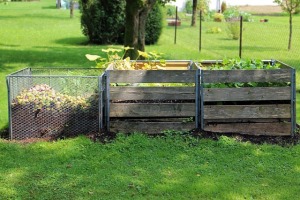 So many countries and cultures around the world are beginning to realize that growing gardens at home is a great way to provide their families with healthy foods or fresh herbs, there are already a lot of people who have created their own small gardens or “green spots” in their back yard. Not only are they receiving the benefits of delicious and healthy vegetables and fruits, but having a garden can help the local environment. So people are starting to practice healthy gardening habits to keep their garden, yard, trees, and surrounding environment healthy.
So many countries and cultures around the world are beginning to realize that growing gardens at home is a great way to provide their families with healthy foods or fresh herbs, there are already a lot of people who have created their own small gardens or “green spots” in their back yard. Not only are they receiving the benefits of delicious and healthy vegetables and fruits, but having a garden can help the local environment. So people are starting to practice healthy gardening habits to keep their garden, yard, trees, and surrounding environment healthy.
So what can you do to help your environment when you own a garden? You can build your own compost pile, or get a backyard compostter of course! With a little bit of work
you can recycle organic waste into an organic matter that you can use as organic fertilizer or soil additive. Compost is perfect way to improve plant growth in your garden.
What is Compost?
First, lets find out what what compost actually is. Composting is a controlled natural conversion process that makes organic material decompose into a state that can be used as a soil additive or fertilizer for your Organic Garden and any other greenery you might have.
At the most basic, compostable materials include yard debris (usually from garden maintenance, like clippings and fallen leaves), and some types of kitchen scraps. These are then put into a suitable environment for proper decomposition.
What are the Benefits of Composting?
Recycling
With just the simplest composting methods, you can remove up to 500 pounds or more of organic matter from the garbage dumps, landfills, and incinerators. Even better, you will end up using all this waste to keep your garden and green areas healthy and fresh.
Proper use of compost will reduce soil erosion caused by water run-off or wind factors. It also improves soil structure, and “recharges” the soil with added nutrients. The porous quality of the soil also improves, reducing dependency on water. Compost can also inhibit plant disease, and even protect your own garden from pollutants.
Community
If you divert your garbage from landfills, you also help reduce methane gas. And if you think about it, although home composting may not mean a lot, once a whole community starts doing this, the impact in terms of waste reduction will be considerable. Composting can also be a jump-off point for community-based recycling and waste diversion initiatives.
Build Your Own Compost Pile
Here are some basic steps on how to build your own compost pile. Home composting may be tricky at first, but once you get into the swing of it, making compost can be integrated easily into your home schedule.
Trash Audit
The very first thing you should do is have a trash audit. You should list down what exactly you throw out, and what you can use for the compost pile.
For example:
What you can use:
◦ Kitchen waste such as fruit and vegetable peels, skins and leaves, coffee grounds, paper filters, tea bags, used paper napkins, egg shells, and corncobs (all of these must be chopped, ground or shredded)
◦ Meat and dairy waste can be used but not in a passive pile. A hot, well-managed active Compost Pile can use these kinds of waste. Run these wastes through a blender or food processor to speed up
◦ Yard wastes such as grass clippings (better if mulched), leaves, weeds, woody materials, needles and straw or hay
◦ Newspaper and sawdust can also be used
What you should not use:
◦ Human and pet waste not only give an unpleasant odor but carry harmful parasites too
◦ Invasive weeds and diseased plants will influence the finished product; invasive weeds may survive the decomposition process and affect your entire garden or yard
◦ Although you can use sawdust as a source of carbon, charcoal ashes will kill the very microorganisms responsible for composting processes
◦ Just like charcoal ashes, plant material with pesticides will also kill the organisms that are central to the decomposition process, and the pesticide itself may even survive the composting process
Location and Appearance
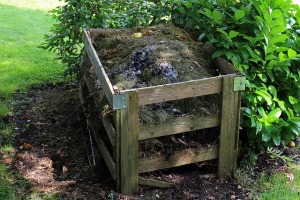 Depending on the size of your yard, creating a your own compost pile may need a chosen corner of the yard, or you may have to create a compost bin. Either way, a pile that is generally larger than 3’ X 3’ x 3’ should be workable. bins are useful if you have animals that may disturb the process, and makes everything look neater. If you will have a natural pile on the ground, choose a place farthest from where you have visitors, and you may have to build some walls or dividers to protect neighbors from the effects of the decomposition process.
Depending on the size of your yard, creating a your own compost pile may need a chosen corner of the yard, or you may have to create a compost bin. Either way, a pile that is generally larger than 3’ X 3’ x 3’ should be workable. bins are useful if you have animals that may disturb the process, and makes everything look neater. If you will have a natural pile on the ground, choose a place farthest from where you have visitors, and you may have to build some walls or dividers to protect neighbors from the effects of the decomposition process.
Making Your Own Composting Pile
Here are three steps important in building your own compost pile:
1. Layer and mix your compostable materials correctly. You should have green materials that are high in nitrogen, which include leaves, acceptable manure, grass cuttings, fruit and vegetable peels, coffee grounds, tea leaves (or bags), and vegetable remains. After that comes the browns, or composting material. These are autumn leaves, sawdust, cardboard, old straw and hay, and other similar products.
You can also throw in unusual materials like eggshells, hair or even paper bags and shredded cotton clothing, but don’t use too much of it. It would be a good idea to sprinkle some garden soil in between layers to establish the right bacteria. In the future, you should reserve some compost from the last pile to use in the new one. Oh, and a good starting ratio would be 75% greens to 25% browns, and you can even go to a 50-50 mix.
2. Your environmental factors should be just right. For example, if your pile is beginning to smell like vinegar, and looks a bit matted or slimy, you should add more dry and brown composting material. Turn it more often, to allow more air to circulate through it. Your pile should also be just a little damp, but not enough that air won’t circulate through it. You should cover your pile if you feel that the air is too dry. Temperature also plays an important role. If your own compost pile is warm to the touch, then you’re doing it right. However, if it seems to be the same temperature as the surroundings, then you may have to add more greens.
3. Turn the pile regularly. Simply move the pile to a spot next to the original location and try to shake up the settled material a bit, to make the decomposition process speed up. Turning the pile once a week is a good idea, but external weather factors can and will affect the length of time – simply observe if the compost pile is decomposing properly.
There is no easy way to tell if composting is done – though by then, the compost at the bottom should have taken on a humus-like appearance, with an earthy smell. Also, by this time, up to 75% percent of the original pile’s mass may have collapsed into the present compost. It’s up to you to decide if it’s right for your usage as a soil additive or fertilizer.
Don’t be discouraged if your first few your own compost piles aren’t that good, as it takes experience to get composting right for your yard. But all that work will be worth it, because you can make your home and garden benefit from recycling trash that would have just been more waste matter to be sent to the landfill


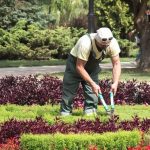
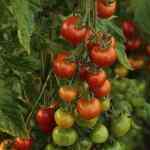
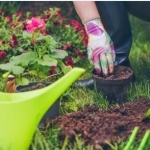
I just started a compost bin – thanks for all the great tips!
Hello Roseann,
I’m glad the article was useful to you. I hope you have success with your compost bin.